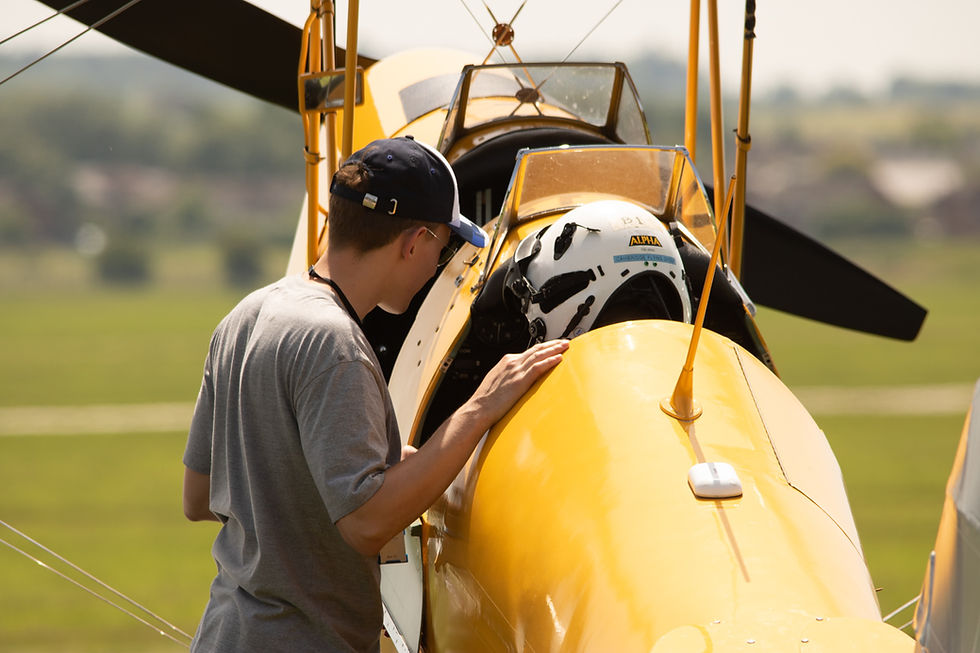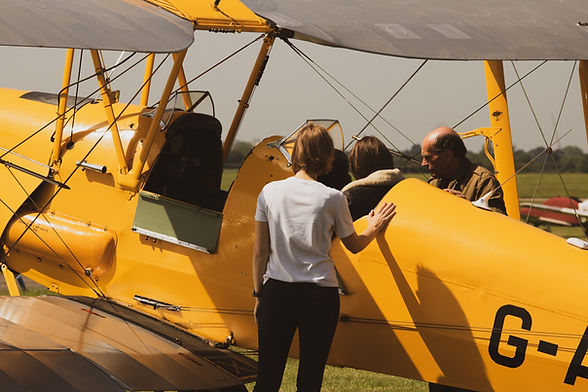
Become a Pilot
Getting a Private Pilot’s Licence
With the right motivation almost anyone can qualify for a private pilot’s licence. The minimum age to hold a licence is 17 but training can start at any age providing you can operate the controls! The training course consists of dual flying with an instructor and once you are competent solo flying supervised by an instructor. In addition to the flying ground studies of aviation subjects are part of the course.
Requirements
The training requires a minimum of 45 flying hours of which at least 10 must be solo flying. The training starts with the basics of aircraft control (climbing, descending, turning etc.) then progresses to taking off and landing. When your instructor assesses that you are ready for it you will fly solo for the first time! This generally happens one third of the way into the course. The training continues with more advanced manoeuvres and navigation flights to other airfields culminating in a solo cross-country flight landing at different airfields. After some final revision you are now ready for the test with an examiner who will usually be one of the group’s instructors. In addition to the flying training student pilots must pass exams in 9 subjects for example Air Law and Meteorology.
Student pilots must be reasonably fit and usually require an aviation medical examination and certificate. (It’s a similar medical standard to that required by car drivers.) For the ground studies a reasonable standard of numeracy and literacy is useful.
Qualification
Once qualified as a private pilot you can fly light aircraft in good weather conditions and carry non-paying passengers (friends and family!). The qualification allows you to fly a UK G registered aircraft worlwide. At CFG you can hire our Tiger Moths for local flying or to venture further afield.
The pilot’s licence is a licence to learn. Have a look at the Advanced Training page for some of the addition skills and qualifications you might want to gain.
Cambridge Flying Group is not a traditional flying school or club. Flying a Tiger Moth is a team activity. We depend on group members helping each other when we go flying (eg moving, fuelling, starting and cleaning the aircraft). So learning to fly on the Tiger Moth is a more immersive experience that learning on a modern aircraft.
You need to know that the challenge and charm of the Tiger Moth does come with limitations. Most important is our requirement for fairly nice weather. The vintage Tiger Moth is less tolerant of strong winds than a modern aircraft so there are days when we can’t fly while others can. And winter days when we do fly but not for very long or we’d freeze! These are good days for your ground studies. This means that the typical student pilot will take longer to train in the Tiger Moth than in a modern aircraft. It is possible with determination to complete the private pilot licence training within 2 years but quite common to take a little longer. You need to enjoy the whole experience!
Scholarship
The Sir Geoffrey de Havilland scholarship is a flying award, and appropriately for its title the training will take place in de Havilland DH82A Tiger Moths of the Cambridge Flying Group (CFG) at Old Warden Aerodrome.
It has been said many times that “if you can fly a Tiger Moth – you can fly anything!” and the yellow and silver Tiger Moth biplanes of the Cambridge Flying Group have 70 years of providing this experience.


